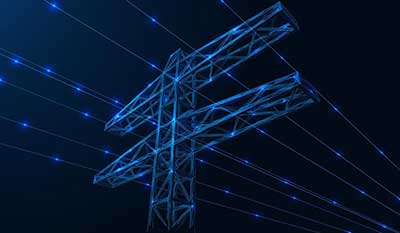Date: 20/12/2022
Relevance: GS-2: India and its Neighbourhood- Relations.
Key Phrases: Upper Tamakoshi Hydroelectric Project (UTKHEP), electric grid system, “Nepal’s Three Gorges dam, Power Trading Agreement, “Cross-Border Trade in Electricity(CBTE) guidelines.
Why in News?
- India-Nepal hydropower trade is set to become a regional game-changer with the possibility of India buying power from Nepal’s largest 456 MW Upper Tamakoshi Hydroelectric Project (UTKHEP) and making it available over an electric grid system to consumers in India, Bangladesh, and even Sri Lanka.
- However, India’s opposition to the use of Chinese contractors in the projects is delaying the process.
Key Highlights:
- Situated close to the Nepal border with Tibet, the project on the Tamakoshi river was called “Nepal’s Three Gorges dam” given its size and its contribution to making Nepal a power surplus country in the “wet” or rainy season.
- The Upper Tamakoshi plant, which has been operational since 2021, was constructed by a number of contractors chosen through an international tender, including the civil construction by China’s Sinohydro and Austria’s Andritz Hydro, for the supply of electro-mechanical equipment, and India’s KEC International for the 220kV transmission line and sub-station.
- With India refusing to purchase power from the UTKHEP for its grid, Nepal’s government has now asked India to allow a bilateral transmission from the power plant to Bangladesh, which has been willing to buy the power.
Upper Tamakoshi Hydroelectric Project:
- The Upper Tamakoshi Hydroelectric Project is a 456 MW peaking run-of-the-river hydroelectric project in Nepal.
- It is the largest hydroelectric project in Nepal, operating since July 2021.
- It is sited on the Tamakoshi River (also spelled Tama Koshi), a tributary of the Sapt Koshi river (also spelled Saptakoshi), near the Nepal–Tibet border.
- When it is operated at full capacity, it is the largest hydroelectric plant in Nepal, with a power output equivalent to two-thirds of Nepal's current power generation.
Saptkoshi river:
- The Kosi or Koshi is a transboundary river that flows through China, Nepal and India.
- It drains the northern slopes of the Himalayas in Tibet and the southern slopes in Nepal.
- From a major confluence of tributaries north of the Chatra Gorge onwards, the Kosi River is also known as Saptakoshi for its seven upper tributaries.
- These include the Tamor River originating from the Kanchenjunga area in the east and the Arun River and Sun Kosi from Tibet.
- The Sun Koshi's tributaries from east to west are Dudh Koshi, Bhote Koshi, Tamakoshi River, Likhu Khola and Indravati.
- The Saptakoshi crosses into northern Bihar, India where it branches into distributaries before joining the Ganges near Kursela in Katihar district.
India-Nepal Hydropower Cooperation:
- India and Nepal signed a path-breaking Power Trading Agreement (PTA) in 2014, agreeing to the exchange of electricity and cooperation in the hydropower sector, and Indian companies are involved in developing several Nepali projects.
- In 2018, the government also brought out guidelines for “Cross-Border Trade in Electricity” (CBTE) guidelines.
Concerns associated with the Upper Tamakoshi Hydroelectric Project:
- In 2021, after the military stand-off at the Line of Actual Control over Chinese transgressions, the government issued a number of financial measures on Chinese investment and imports, including a new “Procedure for Approval and Facilitating Import/Export (Cross Border) of Electricity”.
- The procedure included a clause (6.3(i)) that prohibited trade with power plants that had ownership from any country that shares “a land border” with India but doesn’t have a bilateral power treaty with India — indicating China and Pakistan.
- Energy-hungry India has lately been showing interest in developing mega hydropower projects in Nepal, but it has warned Nepal against the involvement of any Chinese element in projects that would export energy to India.
Arguments of Nepal:
- The Government officials are of the view that it cannot bar the Chinese from contracting any project as per the country’s public procurement law where the projects are done by global bidding.
- There are very few Indian or European contractors in hydropower civil construction, that can compete on cost, and the Chinese contractors, make the lowest bid as seen in many projects.
- Thus, their presence in Nepal’s projects is in significant number and has suggested to India that a single contractor should not be the reason to hold back regional trade.
Other collaborative initiatives launched by India and Nepal:
- India’s state-owned NHPC Limited is to develop two hydropower projects in Nepal with a combined capacity of 1,200 megawatts. They include the 750 MW West Seti Hydropower Project and 450 MW Seti River (SR-6) which are worth a combined $2.4 billion.
- India is currently constructing the $1.04 billion Arun-III Hydropower Project on the Arun river in the eastern region that will churn out 900 megawatts.
- Nepal signed a pact with India’s state-owned Satluj Jal Vidyut Nigam to develop the 679-megawatt Lower Arun Hydropower Project.
- In May this year, Nepal and India signed a pact to develop the 490-megawatt Arun-4 Hydropower Project.
India’s Larger Goal of an Integrated Power Grid Across the South Asian Region:
- India is planning to step up transmission lines and build a massive electricity grid for the region, and electricity from Nepal would be very important for the plans, both due to energy shortages in the region and also due to India’s plans for solar power, for which hydropower is the logical back-up.
- Such an interconnected grid will facilitate large-scale integration of renewable energy with a larger balancing area and contributes to efforts to fulfill clean energy transition priorities.
- With looming climate change threats and the urgent need to tap renewable energy at scale, the role of electricity grid integration has resurfaced as a mechanism to contribute to climate change mitigation and facilitate large-scale decarbonization in a sustainable and economical manner.
Source: The Hindu
Mains Question:
Q. Friendly relations with Nepal hold immense economic, strategic, and cultural significance for India. Discuss. (250 words)






















